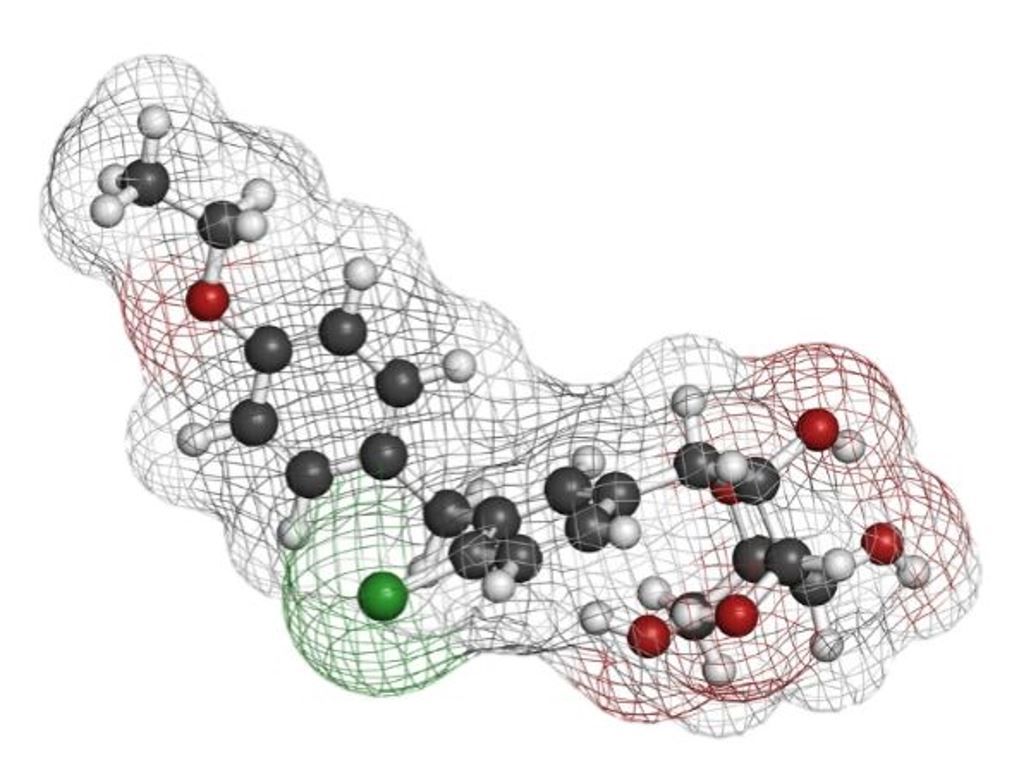SGLT2 Inhibitor Reduces CV, Renal Events in Type 2 Diabetes
ADA 2019-Dapagliflozin reduced CV death, hospitalization for HF, and progression of CKD among T2DM patients with a wide distribution of baselines CVD risk in DECLARE-TIMI 58.
DAPAGLIFLOZIN

SAN FRANCISCO--Risks for cardiovascular (CV) and renal events in patients with type 2 diabetes (T2DM) were reduced with dapagliflozin (Farxiga®) treatment, according to results of a trial with over 17,000 patients presented at the American Diabetes Association (ADA) Scientific Sessions meeting in San Francisco, CA June 7-11.
In a panel discussion of the Dapagliflozin Effect on Cardiovascular Events (DECLARE-TIMI 58) trial, co-principal investigator Itamar Raz, MD, Professor Internal Medicine and Director Emeritus of the Diabetes Unit at Hadassah University Medical Center in Jerusalem, Israel described the favorable results with the sodium-glucose cotransporter-2 (SGLT2) inhibitor in a broad population with diabetes and varying degrees of comorbidity risk.
“In spite of intensive therapy for controlling cardiovascular risk factors in patients with type 2 diabetes, increased CV and renal events still exist in this population, as does excess mortality,” Raz said. “The new class of SGLT2 inhibitors is known to reduce cardiovascular risk factors and has also been shown to reduce hospitalization for heart failure, CV death, and renal deterioration.
“However, these effects were mainly demonstrated in T2DM patients with established CV disease and progressive renal disease who were at high risk for CV events and who represent a small proportion of the diabetic population. Moreover, concerns regarding potential side effects of the class prevented expansion of its use to a large proportion of patients with diabetes,” Raz noted. Previous studies with other SGLT2 inhibitors have raised questions about amputation, stroke, and diabetic ketoacidosis.
Next: DECLARE-TIMI 58 Population, Methods
DECLARE-TIMI 58 Population, Methods
The DECLARE-TIMI 58 trial enrolled 17,160 subjects with T2DM aged ≥ 40 with established cardiovascular disease (CVD), as well as men 55 years or older and women 60 or older who had one or more CV risk factors but were without CVD. The latter group of men and women numbered >10 000 making this the largest population without known CVD to be enrolled in a CV outcomes trial.
Study participants were treated according to local guidelines, with any antihyperglycemic other than thiazolindinediones or SGLT2 inhibitors, and then randomized to receive either dapagliflozin 10 mg daily or placebo.
Follow-up was conducted every 6 months in the clinic and every 3 months by telephone for a median 4.2 years. The primary CVD endpoints were the 3-point major adverse CV event composite (3P-MACE) of cardiovascular death, myocardial infarction, or ischemic stroke; and the composite of CV death or hospitalization for heart failure.
Renal event endpoints were determined with a pre-specified primary composite renal outcome consisting of a sustained 40% decline of estimated glomerular filtration rate (eGFR) to <60ml/min/1.73m2; end-stage renal disease, defined as dialysis ≥90 days, or kidney transplantation, confirmed sustained eGFR <15ml/min/1.73m2; or death from renal or cardiovascular causes. The same outcome without cardiovascular death was the secondary composite renal outcome.
Next: DECLARE TIMI 58 Results
DECLARE TIMI 58 Results
Results from the DECLARE trial were presented by separate panelists, with Ofri Mosenzon, MD, MSc, Professor of Internal Medicine at Hadassah Hebrew University Hospital, Jerusalem, Israel presenting data on renal outcomes and drug effect on diabetic kidney disease. Among these results were higher rates of improvement in categorical urine albumin-to-creatinine ratio (UACR) and lower rates of deterioration in categorical UACR compared to placebo
“We found that patients treated with dapagliflozin had significantly reduced frequency of composite cardiorenal and renal-specific outcomes compared with those in the placebo group,” Mosenzon said.
Stephen Wiviott, MD, Associate Professor of Medicine, Harvard Medical School, Boston, MA reported on the primary CV outcomes. “Dapagliflozin appeared to robustly reduce the risk of MACE and particularly MI in patients with prior MI,” he said.
“The 22 percent relative risk reduction we saw in MI with dapagliflozin is comparable to other established therapies used in secondary prevention, like antiplatelet therapy and intensive lipid lowering,” Wiviott observed.
John Wilding, DM, Professor of Medicine at the University of Liverpool, Liverpool, UK discussed study outcomes in key pre-specified subgroups. He noted that the results supported indications from meta-analysis that SGLT2 inhibitors reduce heart failure hospitalization in a range of T2DM patients, but only reduce MACE in those with established CVD.
“In the DECLARE trial, 59% of patients had multiple risk factors without CVD,” Wilding noted. “After a median of 4.2 years, patients with multiple risk factors treated with dapagliflozin showed similar reductions in heart failure hospitalization to those with established CVD, but no significant reduction in 3-P MACE, and were less likely to develop adverse renal outcomes.”
The safety data with dapagliflozin was summarized by Lawrence Leiter, MD, Professor of Medicine at the University of Toronto, Toronto, Ontario, Canada. Although noting the rare occurrence of events which have previously been documented, such as diabetic ketoacidosis and serious genital infections, he reported no differences in other key safety outcomes.
“Dapagliflozin demonstrated remarkable overall safety across a broad array of subgroups,” Leiter concluded.
Newsletter
Enhance your clinical practice with the Patient Care newsletter, offering the latest evidence-based guidelines, diagnostic insights, and treatment strategies for primary care physicians.